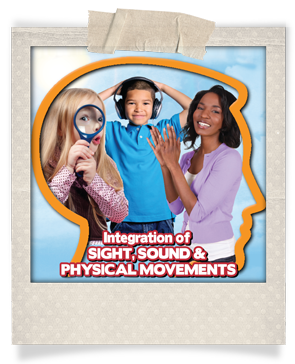
Interactive Metronome® was developed in the early 1990’s and immediately proved of great benefit to children diagnosed with learning and developmental disorders. Backed by years of clinical research, Interactive Metronome’s use has extended to rehabilitation hospitals and clinics, where Interactive Metronome is used to rehabilitate stroke, brain injured, balance disorder and Parkinson’s patients.
Essentially, the human brain has an “internal clock” that regulates timing in the brain. Timing in the brain (called temporal processing) is important in regulating a number of neurological processes necessary for learning and development.
Our ability to focus and process information efficiently and accurately is all a matter of timing.
Interactive Metronome (IM) is a non-invasive, computer-based therapy programme that uses cognitive activities combined with physical exercises to improve timing in the brain.
What areas does Interactive Metronome address?
How does Interactive Metronome work?
The typical Interactive Metronome programme is run over 15 days, with a minimum of 2-3 sessions per week. Each session lasts 30 to 45 minutes. During the session, the patient will wear a set of headphones and carry out a set of movements involving the hands and feet in response to a computer-generated tone. The accuracy is measured by the system in milliseconds. The screen will also display the results to the patient through visual cues. The therapist will guide and coach the patient during the session to help them achieve the age-related goals. Detailed reports on progress are provided by the system. A home-based system is available. Details on request.
What is the process?
An online Child Screening Questionnaire is completed. After an initial Parental Consultation to review the developmental history of the patient, the sessions are scheduled. A pre-programme test is carried out using the system. Another test is carried out mid-way through the programme to measure progress. The pre-programme test will be compared to the post-programme test results to measure the results achieved.
Further information on www.interactivemetronome.com.
Essentially, the human brain has an “internal clock” that regulates timing in the brain. Timing in the brain (called temporal processing) is important in regulating a number of neurological processes necessary for learning and development.
Our ability to focus and process information efficiently and accurately is all a matter of timing.
Interactive Metronome (IM) is a non-invasive, computer-based therapy programme that uses cognitive activities combined with physical exercises to improve timing in the brain.
What areas does Interactive Metronome address?
- Focus
- Processing of information
- Speed and accuracy
- Coordination
- Distractibility
- Memory
- Reading
- Mathematics
- Speech and language
How does Interactive Metronome work?
The typical Interactive Metronome programme is run over 15 days, with a minimum of 2-3 sessions per week. Each session lasts 30 to 45 minutes. During the session, the patient will wear a set of headphones and carry out a set of movements involving the hands and feet in response to a computer-generated tone. The accuracy is measured by the system in milliseconds. The screen will also display the results to the patient through visual cues. The therapist will guide and coach the patient during the session to help them achieve the age-related goals. Detailed reports on progress are provided by the system. A home-based system is available. Details on request.
What is the process?
An online Child Screening Questionnaire is completed. After an initial Parental Consultation to review the developmental history of the patient, the sessions are scheduled. A pre-programme test is carried out using the system. Another test is carried out mid-way through the programme to measure progress. The pre-programme test will be compared to the post-programme test results to measure the results achieved.
Further information on www.interactivemetronome.com.

